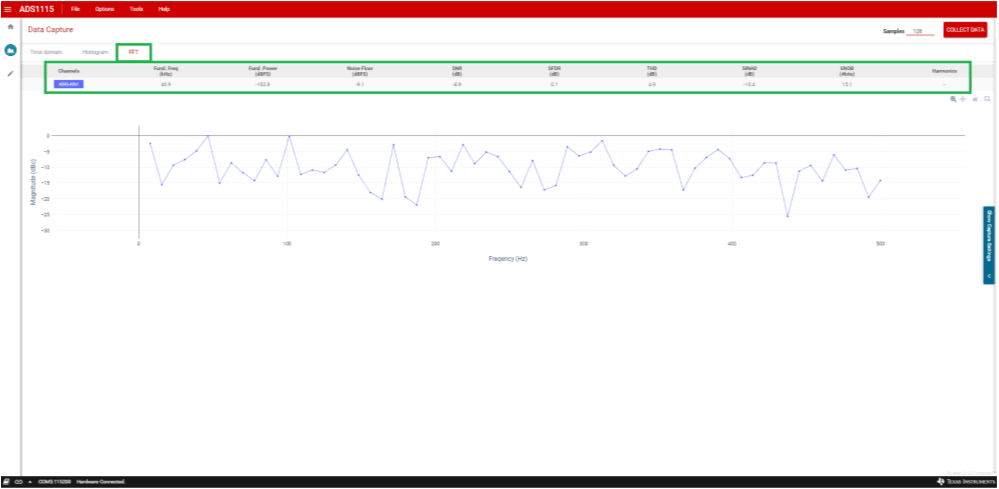SBAU362 March 2021
5.2.2.4 FFT Plot
The FFT plot (as shown in Figure 5-19) is rather meaningless for dc input voltages. However, a low-frequency AC signal can be analyzed and the FFT plot displayed.
 Figure 5-19 FFT Plot
Figure 5-19 FFT PlotSBAU362 March 2021
The FFT plot (as shown in Figure 5-19) is rather meaningless for dc input voltages. However, a low-frequency AC signal can be analyzed and the FFT plot displayed.
 Figure 5-19 FFT Plot
Figure 5-19 FFT Plot